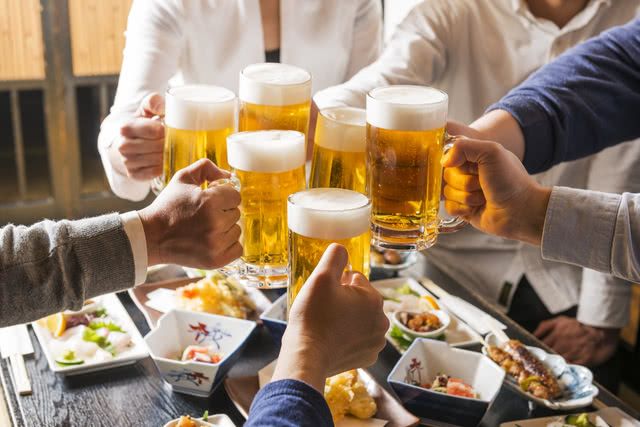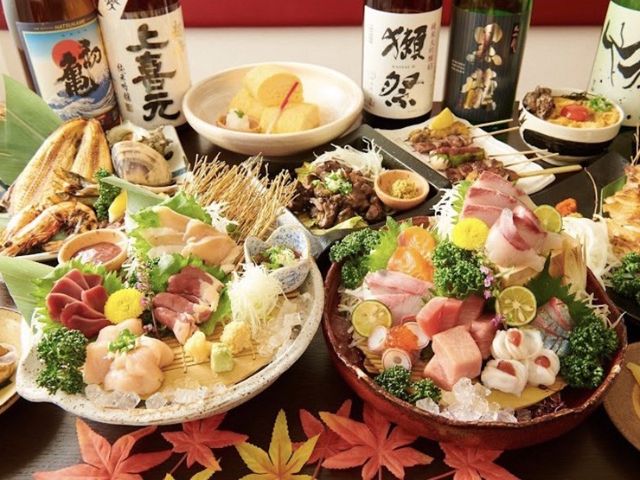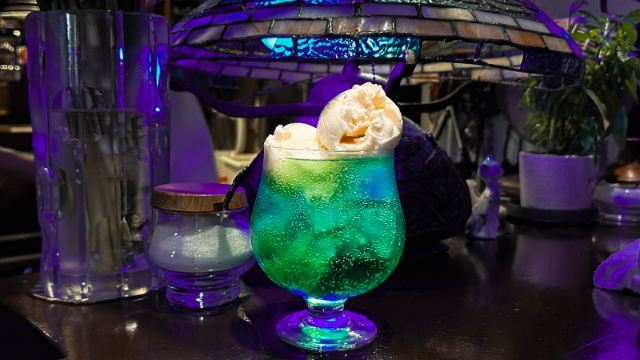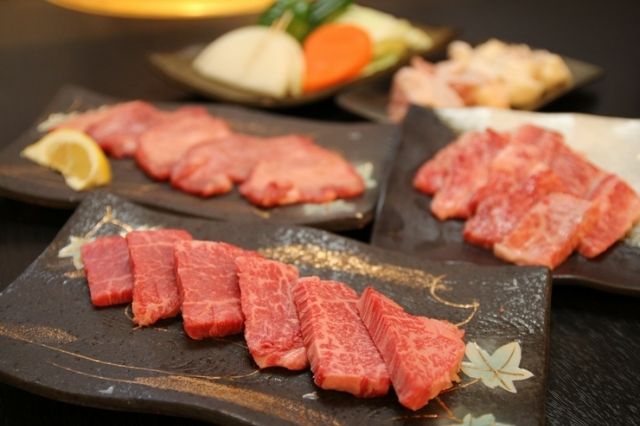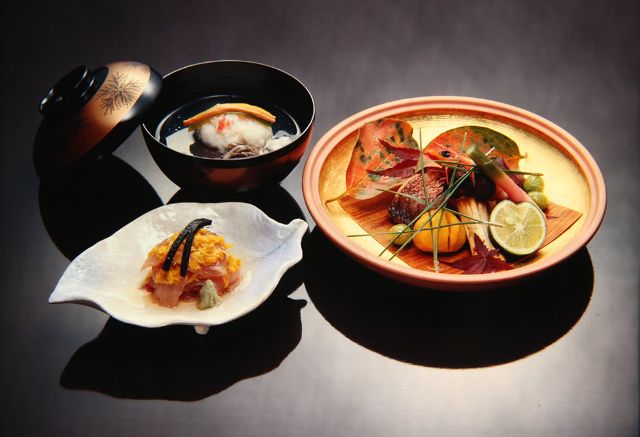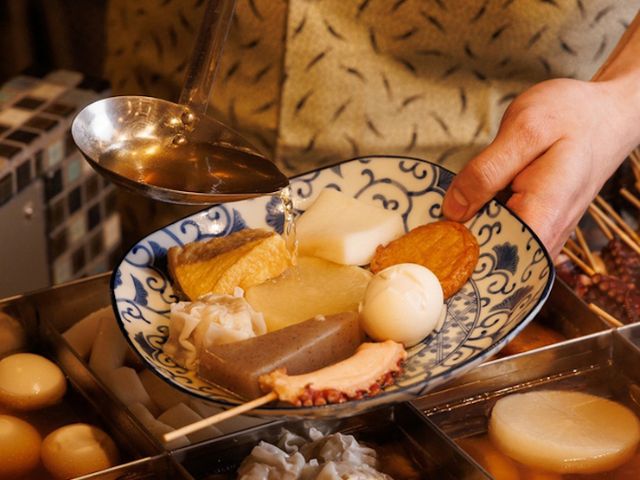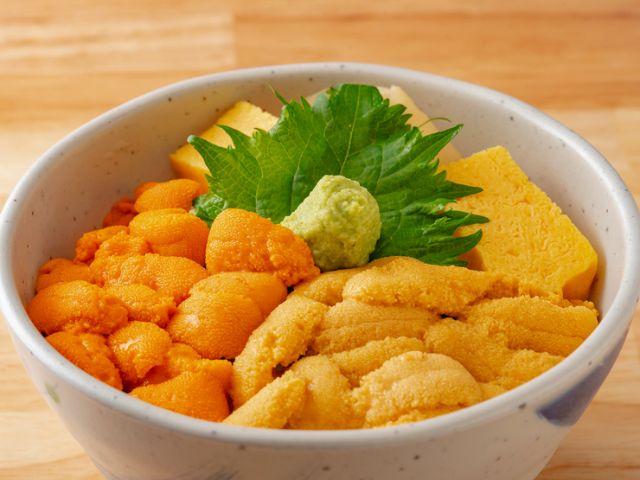A Guide to Yakitori, one of Japan's traditional delicacies!
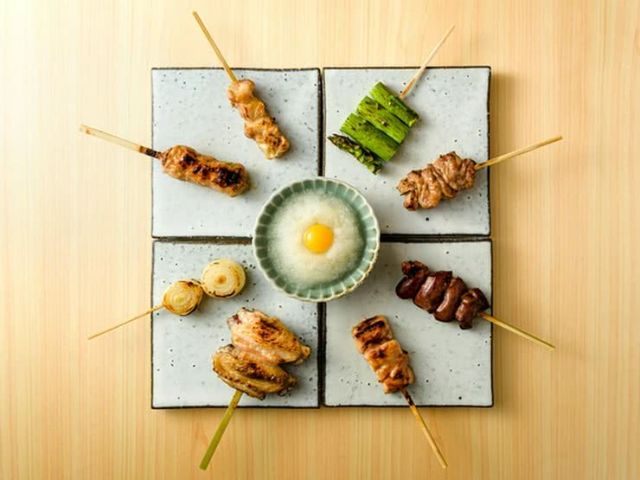
Why is yakitori a beloved dish in Japan?
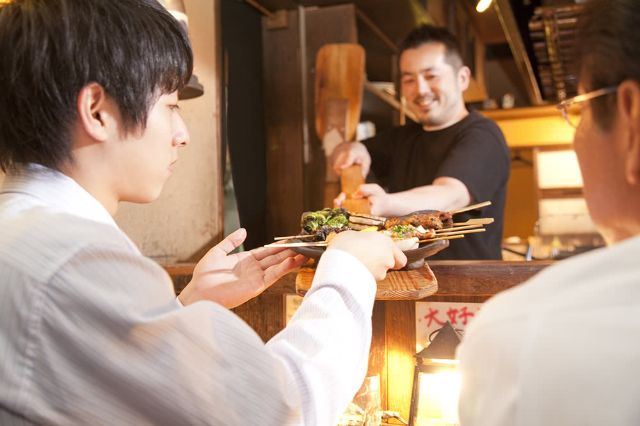
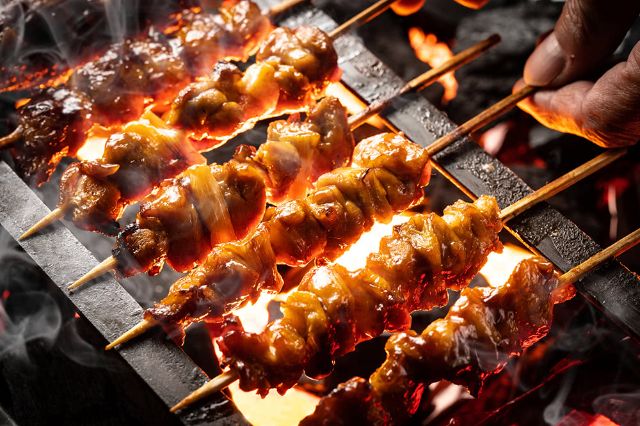
While grilling chicken meat on bamboo skewers over charcoal may seem simple, becoming a yakitori master requires considerable skill. Skewering the chicken to ensure even and tender cooking and making precise heat adjustments while carefully monitoring the meat's condition are highly challenging tasks. There's a famous saying in Japan, "Three years of skewering, a lifetime of grilling," emphasizing that it takes three years to master the skewering technique and a lifetime to become a seasoned yakitori artisan. This saying perfectly captures the dedication and expertise required for this craft.
Classic Yakitori Menu Options
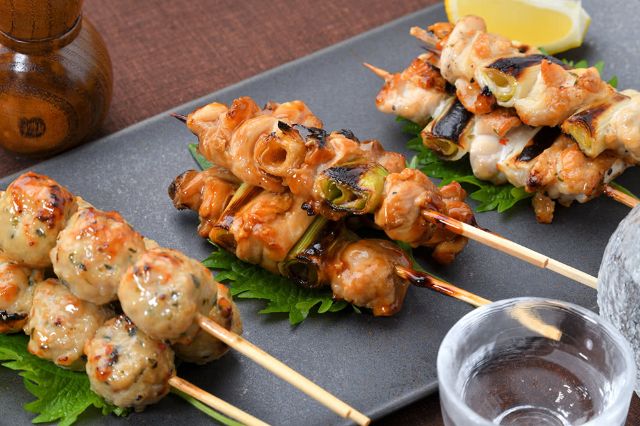
- Negima
Negima consists of yakitori skewers with alternating pieces of chicken thigh meat and leek. The slow grilling process brings out the natural sweetness of the leek, complementing the chicken thigh meat's umami flavor.
- Tsukune
Tsukune is a type of yakitori made by grinding chicken meat, such as breast or thigh, into meat paste and shaping it into balls or cylindrical shapes. Though chicken meat serves as the base, different restaurants may incorporate additional elements. Some places may add finely crushed cartilage for a unique texture, while others might include chicken skin or onions to enhance the sweetness of the meat and vegetables. Each establishment offers its own distinct flavor.
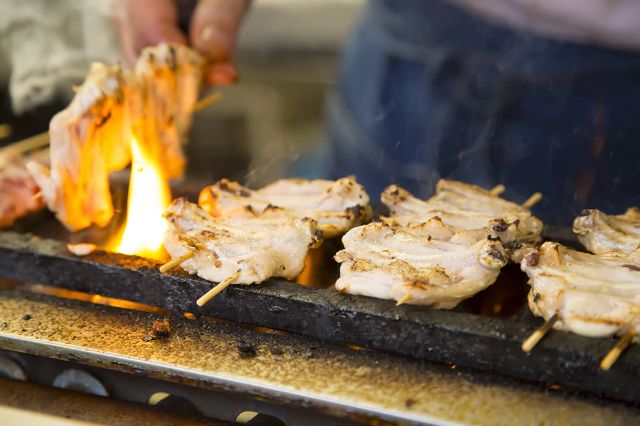
Tebasaki refers to chicken wings. They have a generous amount of fat and are abundant in collagen. They are often seasoned with black pepper, which adds a subtle spiciness that enhances the robust flavor of the meat surrounding the bones.
- Sunagimo
Sunagimo is a yakitori skewer made from grilled chicken gizzards. Gizzards are muscular organs responsible for grinding food with the help of the small stones or shell fragments found inside them. Being primarily composed of muscle, they have minimal odor and a texture that is firm yet tender, making them interesting to eat.
There Are Many Ways to Enjoy Yakitori
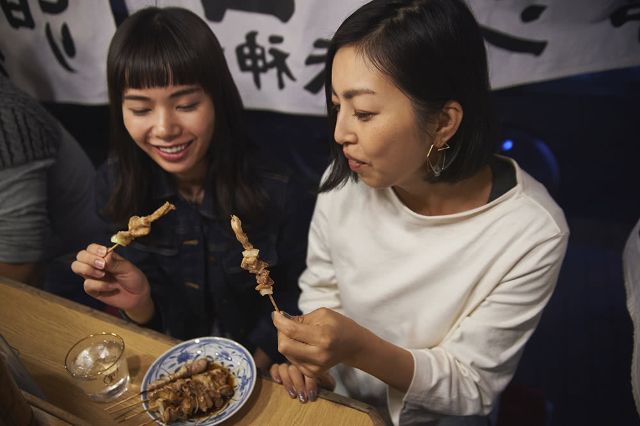
You can also order two skewers each of five different cuts, season one with shio and the other with tare, and share them with friends. If you come to a yakitori restaurant after having dinner at another place, how about ordering two refreshing shio negima skewers and some sake?
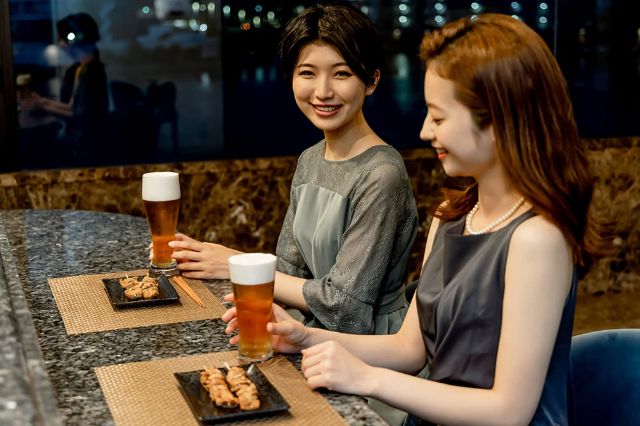
With these high-end establishments, you can enjoy yakitori in a different ambiance than traditional izakaya, such as restaurants with beautiful night views or tranquil settings with jazz music playing in the background.
When you visit Japan, you should try both the low-cost, everyday yakitori and the high-end yakitori to experience the contrast in flavors and dining experiences.
Recommended Yakitori Restaurants
Izakaya Tarochan (Nihombashi)
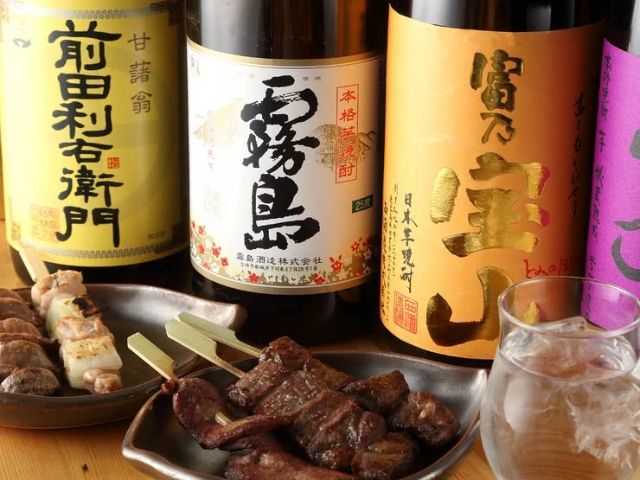
You can order yakitori starting from one skewer, with options such as Torimomo (chicken thigh), Negima, and Sunagimo all priced at 150 JPY. They also offer classic and reasonably priced izakaya dishes: soy sauce-flavored Deep-Fried Chicken for 380 JPY, Edamame (boiled green soybeans) for 280 JPY, and Sashimi starting from 580 JPY.
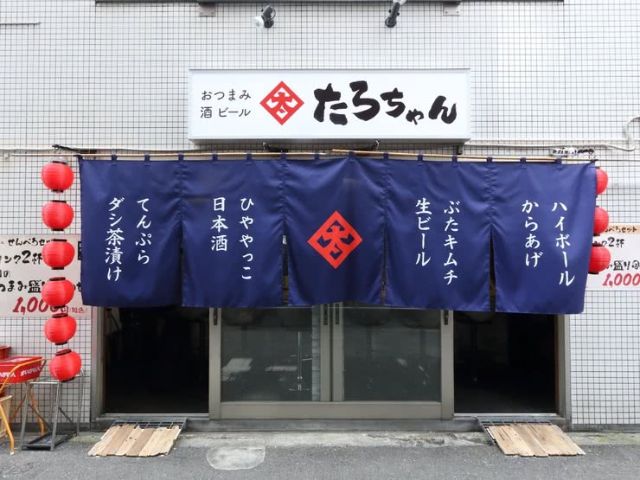
The restaurant is located in the Nippombashi area of Osaka, known for its concentration of electronics retailers and anime-related shops. It's a great idea to taste their yakitori and the owner's recommended local sake after shopping in the area!
Izakaya Tarochan
Closed: Monday
Average price: [Dinner] 2,000 JPY
Access: 3 minutes walk from Exit 2 of Nippombashi Station on the Osaka Metro Sakaisuji Line
Address: 1F, Adeu Sennichimae Nibankan, 1-1-10, Sennichimae, Chuo-ku, Osaka-shi, Osaka Map
More Details Reservation
Sumiyakitori Sato (Hosui Susukino)
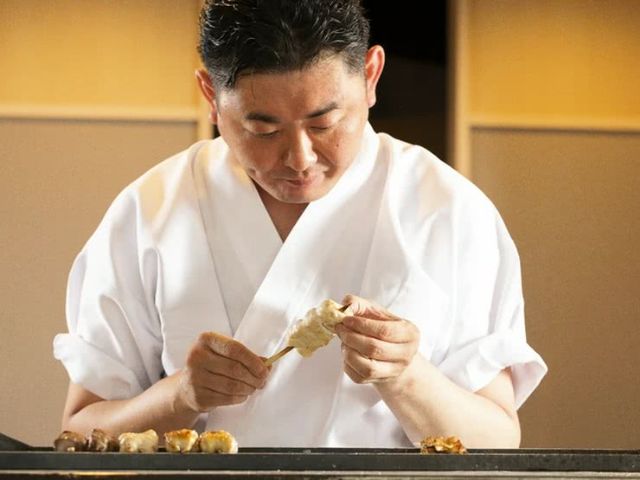
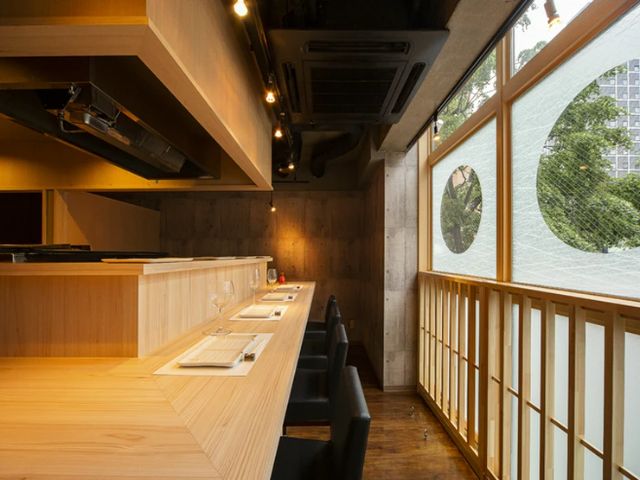
For a truly unique dining experience highlighting seasonal flavors, their [Special Plan] comprising 13 dishes (7,000 JPY, plus a 10% service charge per person) comes recommended. This course allows you to savor and compare the distinct flavors of both Otaru Jidori and other premium chicken varieties.
Sumiyakitori Sato
Closed: Irregular
Average price: [Dinner] 7,500 JPY
Access: About 10 seconds walk from Hosui-Susukino Station on the Subway Toho Line. Go out from Exit 1, it is located on the 2nd floor of the building right in front
Address: 2F, SB41 Bldg., 1-5-2, Minami-shijo Nishi, Chuo-ku, Sapporo-shi, Hokkaido Map
More Details Reservation
Yakitori Hirano (Shimbashi)
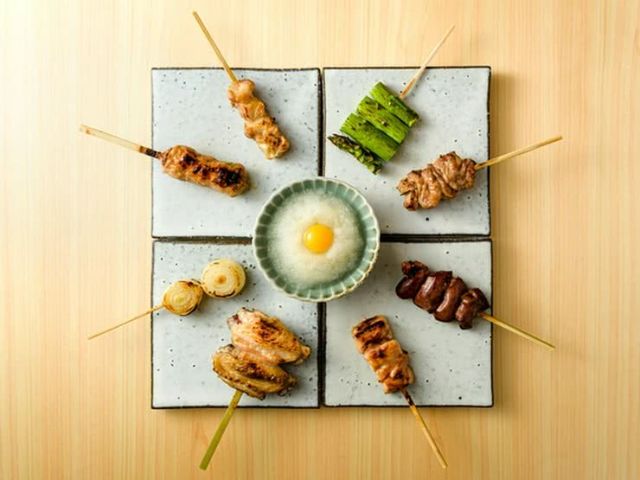
By the way, the recipe for the tare from [Yakitori Hirano] has been passed down for generations over half a century. This unique sauce imparts a delightful fermented aroma and enriches the yakitori with a succulent umami taste, making you want to eat more.
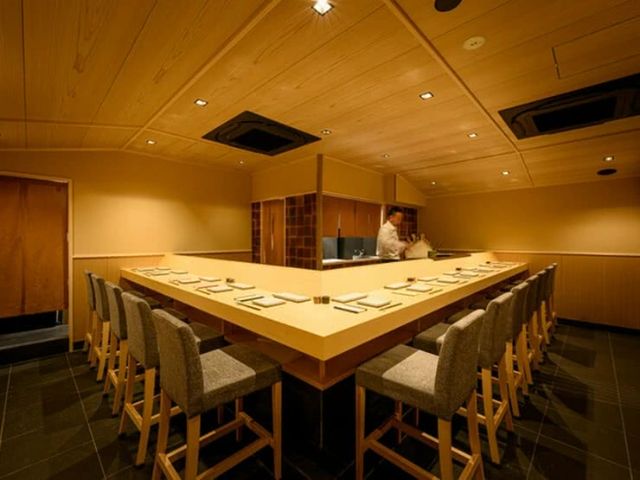
Yakitori Hirano
Closed: Sunday, National Holidays
Average price: [Dinner] 15,000 JPY
Access: 5-minute walk from Shimbashi Station on the Ginza Line, 6-minute walk from JR Shimbashi Station, 6-minute walk from Higashi-Ginza Station on the Hibiya Line
Address: 1F, Zenkoku Nenryokaikan, 8-12-15, Ginza, Chuo-ku, Tokyo Map
Disclaimer: All information is accurate at time of publication.
Thank you for reading our article.
Our goal is to take your culinary journey to the next level by helping you find the best restaurant. With SAVOR JAPAN, you can search and make reservations for
the Yakitori restaurants found in and around Ginza, Osaka and Sapporo that fill your needs.
Discover more Yakitori restaurants by area
- Tokyo Area
- Near Tokyo
- Kyoto and Osaka Area
- Hokkaido Area
- Northern Honshu (Tohoku)
- Central Honshu (Chubu)
- Western Honshu (Chugoku)
- Shikoku
- Kyushu
- Okinawa and Ryukyu Islands
Discover more restaurants to eat Japanese Cuisine by area
Related Articles
New Articles
Categories
Cuisine
- Bars (23)
-
Japanese Cuisine (676)
- Kaiseki (46)
- Nabe (19)
- Okonomiyaki (24)
- Shabu Shabu (36)
- Soba (17)
- Sushi (137)
- Tempura (18)
- Teppanyaki (46)
- Shojin Ryori (3)
- Tonkatsu (12)
- Kushiyaki (10)
- Yakitori (46)
- Sukiyaki (35)
- Japanese Cuisine (341)
- Oyster (2)
- Sashimi/ Seafood (19)
- Unagi (eel) (30)
- Motsu Nabe (offal hotpot) (6)
- Mizutaki (chicken hot pot) (3)
- Oden (8)
- Kaisendon (seafood bowl) (9)
- Udon (2)
- Taverns(Izakaya) Cuisine (125)
- Western Cuisine (42)
- Italian/French Cuisine (95)
- Yakiniku/Steak (225)
- Chinese Cuisine (26)
- Ramen (Noodles) Cuisine (26)
- Cafe/Sweets (60)
- Other Asian Cuisine (5)
- Global/International Cuisine (7)
- Alcohol (45)
- Other (11)
Area
- Shikoku (10)
- Kyoto and Osaka (345)
-
Tokyo (460)
- Tokyo (286)
- Ginza (44)
- Roppongi (22)
- Shibuya (26)
- Shinjuku (47)
- Asakusa (20)
- Ebisu (12)
- Tsukiji (10)
- Tokyo Landmarks (4)
- Ueno (24)
- Akihabara (9)
- Ikebukuro (12)
- Jiyugaoka, Denenchofu, Nakameguro (9)
- Shimokitazawa (4)
- Kichijoji (3)
- Tachikawa (1)
- Omotesando, Harajuku, Aoyama (18)
- Akabane (1)
- Kagurazaka (4)
- Akasaka (10)
- Odaiba (1)
- Tsukishima, Harumi, Toyosu (3)
- Near Tokyo (100)
- Okinawa and Ryukyu Islands (58)
- Hokkaido (124)
- Northern Honshu (Tohoku) (31)
- Central Honshu (Chubu) (144)
- Western Honshu (Chugoku) (32)
- Kyushu (92)
Archives
- December 2025(9)
- November 2025(4)
- October 2025(3)
- September 2025(6)
- August 2025(11)
- July 2025(19)
- June 2025(18)
- May 2025(34)
- April 2025(43)
- March 2025(30)
- February 2025(36)
- January 2025(26)
- December 2024(69)
- November 2024(31)
- October 2024(15)
- September 2024(39)
- August 2024(65)
- July 2024(31)
- June 2024(54)
- May 2024(61)
- April 2024(28)
- March 2024(31)
- February 2024(42)
- January 2024(32)
- December 2023(20)
- November 2023(5)
- October 2023(11)
- September 2023(7)
- August 2023(18)
- July 2023(8)
- June 2023(8)
- May 2023(18)
- April 2023(15)
- March 2023(1)
- January 2023(1)
- April 2022(2)
- March 2022(2)
- February 2022(1)
- January 2022(1)
- July 2021(1)
- March 2021(1)
- February 2021(1)
- December 2020(1)
- October 2020(1)
- September 2020(2)
- August 2020(10)
- July 2020(6)
- June 2020(9)
- May 2020(11)
- April 2020(8)
- March 2020(8)
- February 2020(13)
- January 2020(9)
- December 2019(24)
- November 2019(8)
- August 2019(14)
- July 2019(15)
- June 2019(18)
- May 2019(17)
- April 2019(16)
- March 2019(22)
- February 2019(22)
- January 2019(26)
- December 2018(34)
- November 2018(40)
- October 2018(32)
- September 2018(11)
- August 2018(8)
- July 2018(6)
- June 2018(9)
- May 2018(10)
- April 2018(21)
- March 2018(74)
- February 2018(39)
- January 2018(26)
- December 2017(60)
Keywords
- Omakase
- Accessible
- Affordable
- All-You-Can-Eat
- Amazing Scenery
- anime
- Art
- Autumn
- Awards
- Beer Gardens
- Breakfast
- Chef Recommendations
- Cherry Blossoms
- Chinese
- Close To Station
- Condiments
- Counter
- Coupon
- Crab
- Culture
- Dassai
- Dates
- delivery
- Early Summer
- Editor's Recommendation
- English Available
- Event
- Expo
- Fall Leaves
- Family-Friendly
- Famous Restaurant
- Famous Tourist Spot
- Fast Food
- festival
- fireworks
- Flower Farm
- Free Wi-Fi
- French
- Great Location
- Guide
- Hibachi
- hotpot
- How To
- hydrangea
- Hygiene
- Illumination
- Italian
- Izakaya
- Japanese
- Japanese alcohol
- jingisukan
- Kaiseki
- Kappo
- Kushiage
- Kushikatsu
- Kyoto
- Late-Night
- Lunch
- Manners
- matsusakagyu
- Michelin
- mizutaki
- Model Course
- monjayaki
- motsunabe
- Mt.Fuji
- Multilingual Menus
- Nabe
- Narita Airport
- New Year
- Ninja
- Noodle
- Oden
- Okonomiyaki
- omotenashi
- Onsen
- Osaka
- Osaka Station
- Photogenic Site
- pizza
- PR
- Private Room
- Ramen
- ranking
- Recipe
- Regional Cuisine
- Resort
- Rice Bowl Dish (Donburi)
- sacred places
- Sake
- Sakura
- Sashimi
- sea urchin
- Setouchi Area
- Shabu Shabu
- sightseeing
- Signature Dish
- Soba
- Solo Diners Welcomed
- Spicy Food
- Spring
- Steak
- Summer
- Sunflower
- Sushi
- takeout
- Teppanyaki
- Terrace Seating
- Tokyo
- Tokyo Experiences
- Tokyo Skytree
- Tokyo Tower
- unagi
- UNESCO
- Vegan
- Vegetarian
- Wagyu
- What Popular Gourmet Sites Recommend
- Whisky
- Wine Bar
- Winter
- Wisteria
- Workshop
- World Heritage Site
- World Writers
- Yakiniku
- Yoshoku
- Yuba
- Zen
Discover Restaurants By Area
-

Tokyo Area
Japan's largest city, Tokyo, is the center of culinary culture in Japan. Countless Tokyo restaurants serve every kind of food imaginable and the Toyosu fish market keeps restaurants stocked with the nation's finest fish.
-

Near Tokyo
Coastal areas, mountains and valleys surrounding Tokyo are bursting with tourist destinations, such as hot springs and ski slopes, where many unique foods are only available locally.
-

Kyoto and Osaka Area
The cities of Kyoto and Osaka, together with their surrounding areas, have greatly influenced Japan's culinary culture since the 7th Century. The region is renowned for its entertainment, Kobe beef, and wide-ranging traditional dishes.
-

Hokkaido Area
The island of Hokkaido is home to wide-ranging produce of the finest quality, such as rice, meat, vegetables, fish and fruit. Popular dishes from Hokkaido include robatayaki (food slowly roasted on skewers) and Sapporo miso ramen.
-

Northern Honshu (Tohoku)
The northern end of Japan's main island, Honshu, is renowned for its seasonal fruit and vegetables, nation-leading harvest of fish (especially tuna from Ohma), and delicious beef from Yonezawa, Sendai and Yamagata.
-

Central Honshu (Chubu)
Chubu is in the center of Japan's main island, Honshu, and its culinary culture reflects its position between Japan's western and eastern halves. Delicious Hida beef, world-famous Mount Fuji and many acclaimed sake breweries are in Chubu.
-

Western Honshu (Chugoku)
Chugoku, on the southwest of Japan's main island, is rich with diverse produce. Many of its products are praised as Japan's best, including Matsuba crabs from Tottori and oysters from Hiroshima. Its pears and muscats are also top grade.
-

Shikoku
The mild climate of Shikoku is ideal for growing citrus fruit such as sudachi. Shikoku is also famous for Sanuki udon noodles, huge yields of tiger prawn from Ehime Prefecture and the best torafugu (tiger globefish) in the country.
-

Kyushu
Western culture was first introduced to Japan through Kyushu, Japan's third largest island, where the influence of Portuguese and other western cuisine influenced the creation of a colorful culinary tradition.
-

Okinawa and Ryukyu Islands
Okinawa, Japan’s southernmost prefecture, is a treasure trove of distinctive dishes and drinks that have become popular throughout Japan, including Okinawa soba, unique sushi toppings and Awamori distilled liquor.

